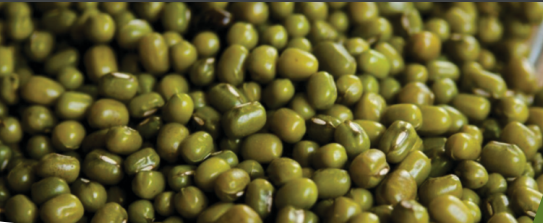In this Article
A study published by the Asian Journal of Agriculture and Rural Development (AJAD) assessed the economic benefits of mung bean production to encourage more farmers to venture into mung bean production.

Over the past five years, mung bean (Vigna radiata L.) production has gradually increased. During the third quarter of 2022, mung bean production was estimated at 1.37 thousand metric tons (MT). This was 0.7 percent higher than the previous year’s period, with Cagayan Valley as the top producer, followed by Davao Region. Mung bean, locally known as “mongo” is widely grown alongside rice in the Philippines. Farmers in the municipality of Cuyapo, Nueva Ecija regularly plant mung bean after the first cropping season because of its tolerance to dry season.
The study utilized a descriptive research design, employing quantitative and qualitative methods to acquire data from the respondents. A quantitative method was used to gather data on the farmer-respondent’s profile variables and the cost and return analysis of mung bean production. Meanwhile, a qualitative method was used to understand the constraints and potential of mung bean cultivation as a livelihood source among farmers in Cuyapo, Nueva Ecija.
The study revealed that mung bean cultivation yields a return on investment (ROI) of 116.81%, indicating that farmers can completely recover the costs associated with its production. The costs and returns analysis demonstrated that a farmer could generate a gross income of PHP 49,000. On average, a hectare yields 700 kilograms (kg) of mung beans sold at PHP 70 per kg. Operating expenses, including labor and material inputs, totaled PHP 22,600. Expenditures on material inputs such as seeds, pesticides, and insecticides amounted to PHP 5,000. Labor expenses, covering activities like planting, spraying, harvesting, and threshing, were PHP 17,600. Consequently, a farmer nets an average of PHP 26,400 per hectare by cultivating mung beans over three months.
However, farmers face several challenges, including the high cost of farm inputs, low farmgate prices for mung bean harvests, the destruction caused by stray farm animals, the threat of widespread pest infestation, and low production volumes. To mitigate these issues, the study recommends assistance from government agencies in the form of material and cash subsidies, marketing support, and technical assistance tailored to their needs. Additionally, it suggests specialized training for farmers in processing mung beans into value-added food products. Finally, incorporating mung beans into their crop rotation could also be a viable strategy for farmers.
Reference: Domingo, A. (2023). Mung bean production as a source of livelihood among farmers in a municipality in the Philippines: Challenges and Opportunities. Asian Journal of Agriculture and Rural Development, 13 (2), 130 – 137. 10.55493/5005.v13i2.4779. Retrieved February 29, 2024 from https://archive.aessweb.com/index.php/5005/article/view/4779/7587




